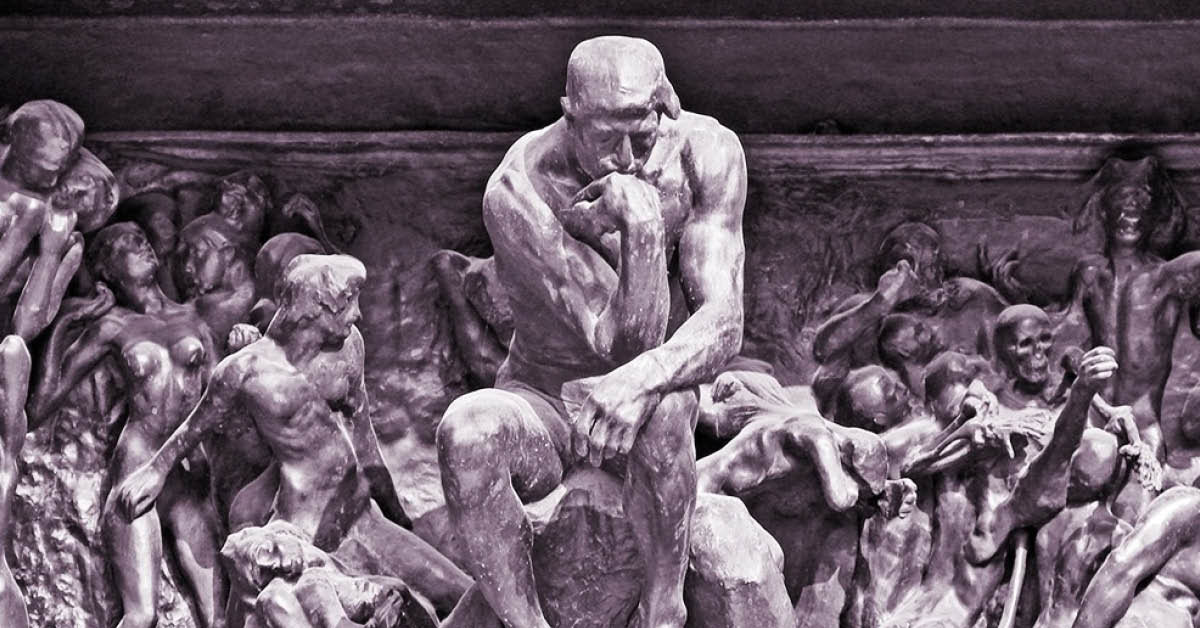The Petronas Twin Towers - Creative Brilliance and Technical Expertise
The Petronas Twin Towers in Malaysia is an 88-story engineering masterpiece that’s affectionately known as Kuala Lumpur’s crown jewel. Each tower climbs 452 metres into the sky like a bridge to another world in the clouds, a magnificent display of laminated glass and stainless steel resting safely on 120 metre foundations burrowed deep below the streets of this vibrant city.
While the technical skills of the twin tower’s engineers is truly remarkable, it is the creativity and inspiration of former Prime Minister Tun Dr. Mahathir Mohamad and others that take our breath away as we gaze in admiration at Kuala Lumpur’s crown jewel.
Dr Mahathir wanted the towers to resemble an eight-pointed star to represent unity, harmony, stability, and rationality in the Islamic cultures. This presented design challenges for lead architect César Pelli, who overcame these by embracing his creative genius to help bring Dr Mahathir’s vision for Malaysia to life. 1
The creative brilliance and technical expertise of the Petronas Twin Towers brings us to an interesting question on brain function. Were the engineers mostly left-brained logical people, and were the creatives like Mr Pelli largely right-brained people?
This question explores the long held belief that creativity happens in the right side of our brain and logic in the left side. Is this true?
According to Professor Indre Viskontas, who holds a Ph.D. in Cognitive Neuroscience, this belief has been “overused and misinterpreted by many people” and our brain hemispheres work together much more than we originally thought.
Neuroscience reveals that while some brain function is isolated within a hemisphere... “the left brain is necessary for creativity” and ‘information is zipping across the hemispheres during the vast majority of tasks that we ask our brains to accomplish.” 2
Let’s take this fascinating brain discussion even further by taking a closer look at a recently published study on Engineering undergraduates in Malaysia. Based on the study’s findings, which is also supported by neuroplasticity, engineering undergraduates can be trained or educated to be more creative when comes to deriving various relevant design of products or solutions. 3
However, the authors found that multiple studies in the past decade have established that educational institutions worldwide, including in Malaysia, are not doing enough to support the development of creativity for engineering students.
This latest study concluded the current generation of engineering students should be equipped with more than the technical knowledge that is taught in any engineering school. Educators must also prepare engineering students with practical skills such as creativity to ensure Malaysia can stay afloat, remain relevant and competitive in the ever-changing global arena.
The Petronas Twin Towers exemplifies what can be accomplished when we generate new ideas, act with the tenacity to bring the best ones to life and have the wisdom to motivate other people and support them. Innovation is one of the four key competencies of the i4 Neuroleader Model. The success of innovation is heavily dependent on the creativity generated by our imagination.
And it’s not only Malaysian engineering undergraduates who will benefit from learning more about their brain and how to optimise it if they want to perform more effectively at work and in life. We believe that the i4 Neuroleader Model competencies and pillars can help everybody deal more creatively with the challenges of a VUCA world.
Citations:
- PETRONAS Twin Towers Visit Operations, 2020
- Brain Myths Exploded, Lessons from Neuroscience, Professor Indre Viskontas, 2017
- Chua, Y. L., Balakrishnan, B., Chai, V. C., & Koh, Y. Y. (2020). Assessing the validity and reliability of creative thinking skills module in a pilot study on engineering undergraduate in Malaysia. Asian Journal of Assessment in Teaching and Learning, 10(1), 77-85
- i4 Neuroleader (353)
- Leadership & Culture (336)
- Brain Health & Wellbeing (206)
- Innovation (97)
- Performance (85)
- Our News (79)
- Collaboration (68)
- Agility (53)
- Practitioner Stories (44)
- In The Press (36)
- Make Me A Leader (33)
- Balance (31)
- Integration (30)
- Imagination (29)
- Awareness (23)
- Brain-Friendly Channel (22)
- Brain-Friendly Leadership (22)
- Communication (22)
- Curiosity (21)
- Inspiration (19)
- Intuition (19)
- Attitude (17)
- Courage (16)
- Adaptability (14)
- Case Studies (14)
- Drive (14)
- Generosity (13)
- Ethics (9)
- Mental Readiness (9)
- Influence (8)
- Retreat (8)
- Brain-Friendly Leadership (1)
- Oracle Cards (1)
- 1 November 2025 (2)
- 1 September 2025 (3)
- 1 August 2025 (5)
- 1 July 2025 (5)
- 1 June 2025 (2)
- 1 April 2025 (1)
- 1 March 2025 (8)
- 1 February 2025 (3)
- 1 September 2024 (4)
- 1 July 2024 (2)
- 1 June 2024 (6)
- 1 May 2024 (2)
- 1 April 2024 (3)
- 1 March 2024 (1)
- 1 November 2023 (1)
- 1 August 2023 (1)
- 1 July 2023 (2)
- 1 June 2023 (2)
- 1 May 2023 (4)
- 1 April 2023 (2)
- 1 March 2023 (7)
- 1 February 2023 (4)
- 1 January 2023 (1)
- 1 September 2022 (1)
- 1 May 2022 (3)
- 1 April 2022 (1)
- 1 March 2022 (5)
- 1 February 2022 (4)
- 1 January 2022 (4)
- 1 December 2021 (2)
- 1 November 2021 (4)
- 1 October 2021 (3)
- 1 September 2021 (6)
- 1 August 2021 (1)
- 1 April 2021 (1)
- 1 December 2020 (2)
- 1 November 2020 (1)
- 1 September 2020 (1)
- 1 August 2020 (1)
- 1 July 2020 (3)
- 1 June 2020 (4)
- 1 May 2020 (3)
- 1 April 2020 (4)
- 1 March 2020 (6)
- 1 February 2020 (4)
- 1 January 2020 (2)
- 1 December 2019 (3)
- 1 November 2019 (3)
- 1 October 2019 (5)
- 1 September 2019 (4)
- 1 August 2019 (4)
- 1 July 2019 (4)
- 1 June 2019 (5)
- 1 May 2019 (9)
- 1 April 2019 (9)
- 1 March 2019 (8)
- 1 February 2019 (7)
- 1 January 2019 (8)
- 1 December 2018 (5)
- 1 November 2018 (10)
- 1 October 2018 (16)
- 1 September 2018 (9)
- 1 August 2018 (10)
- 1 July 2018 (9)
- 1 June 2018 (8)
- 1 May 2018 (9)
- 1 April 2018 (9)
- 1 March 2018 (9)
- 1 February 2018 (8)
- 1 January 2018 (8)
- 1 December 2017 (6)
- 1 November 2017 (9)
- 1 October 2017 (9)
- 1 September 2017 (8)
- 1 August 2017 (10)
- 1 July 2017 (8)
- 1 June 2017 (8)
- 1 May 2017 (9)
- 1 April 2017 (8)
- 1 March 2017 (6)
- 1 January 2017 (3)
- 1 December 2016 (4)
- 1 November 2016 (5)
- 1 October 2016 (4)
- 1 September 2016 (2)
- 1 August 2016 (4)
- 1 July 2016 (4)
- 1 June 2016 (2)
- 1 May 2016 (3)
- 1 April 2016 (3)
- 1 March 2016 (7)
- 1 February 2016 (2)
- 1 January 2016 (5)
- 1 December 2015 (2)
- 1 November 2015 (2)
- 1 October 2015 (4)
- 1 September 2015 (2)
- 1 August 2015 (2)
- 1 July 2015 (1)
- 1 June 2015 (3)
- 1 May 2015 (4)
- 1 April 2015 (5)
- 1 March 2015 (3)
- 1 February 2015 (3)
- 1 January 2015 (3)
- 1 December 2014 (3)
- 1 November 2014 (3)
- 1 October 2014 (3)
- 1 September 2014 (5)
- 1 August 2014 (4)
- 1 July 2014 (5)
- 1 June 2014 (3)
- 1 May 2014 (1)
- 1 March 2014 (1)
- 1 December 2013 (2)
- 1 November 2013 (1)
- 1 July 2013 (1)
- 1 June 2013 (1)
- 1 May 2013 (3)
- 1 April 2013 (1)
- 1 March 2013 (2)
- 1 February 2013 (1)
- 1 January 2013 (2)
- 1 November 2012 (1)
- 1 October 2012 (1)
- 1 September 2012 (1)
- 1 August 2012 (2)
- 1 July 2012 (1)
- 1 June 2012 (1)
- 1 May 2012 (2)
- 1 April 2012 (1)
- 1 February 2012 (1)
- 1 January 2012 (1)
- 1 November 2011 (1)
- 1 October 2011 (3)
- 1 September 2011 (2)
- 1 July 2011 (1)
- 1 June 2011 (1)
- 1 May 2011 (1)
- 1 April 2011 (1)
- 1 March 2011 (1)
- 1 February 2011 (2)
- 1 January 2011 (4)
- 1 December 2010 (4)
- 1 November 2010 (3)
- 1 October 2010 (5)
- 1 September 2010 (4)
- 1 August 2010 (4)
- 1 July 2010 (3)
- 1 June 2010 (4)
- 1 May 2010 (7)
- 1 April 2010 (5)
Subscribe by email
You May Also Like
These Related Stories

The Value Of Being Grateful

The Enigmatic Smile Of Mona Lisa



No Comments Yet
Let us know what you think